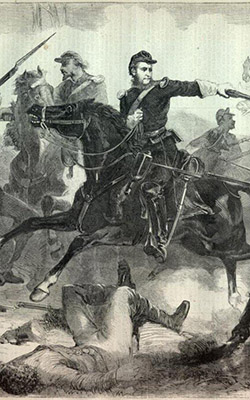
Please send all Checks and Money orders to :
Dave Taylor P.O. Box 87 Sylvania, OH 43560
419-842-1863
Click Here to E-mail Us!
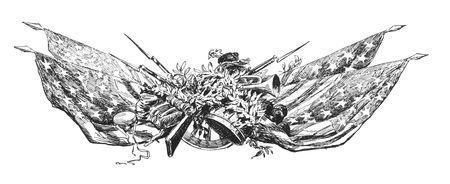
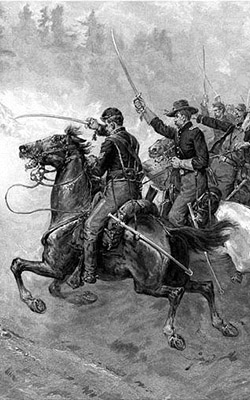
14 02 second list
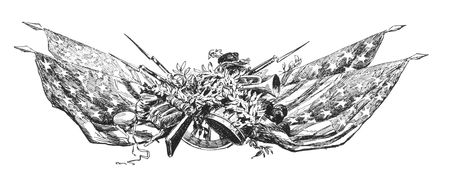
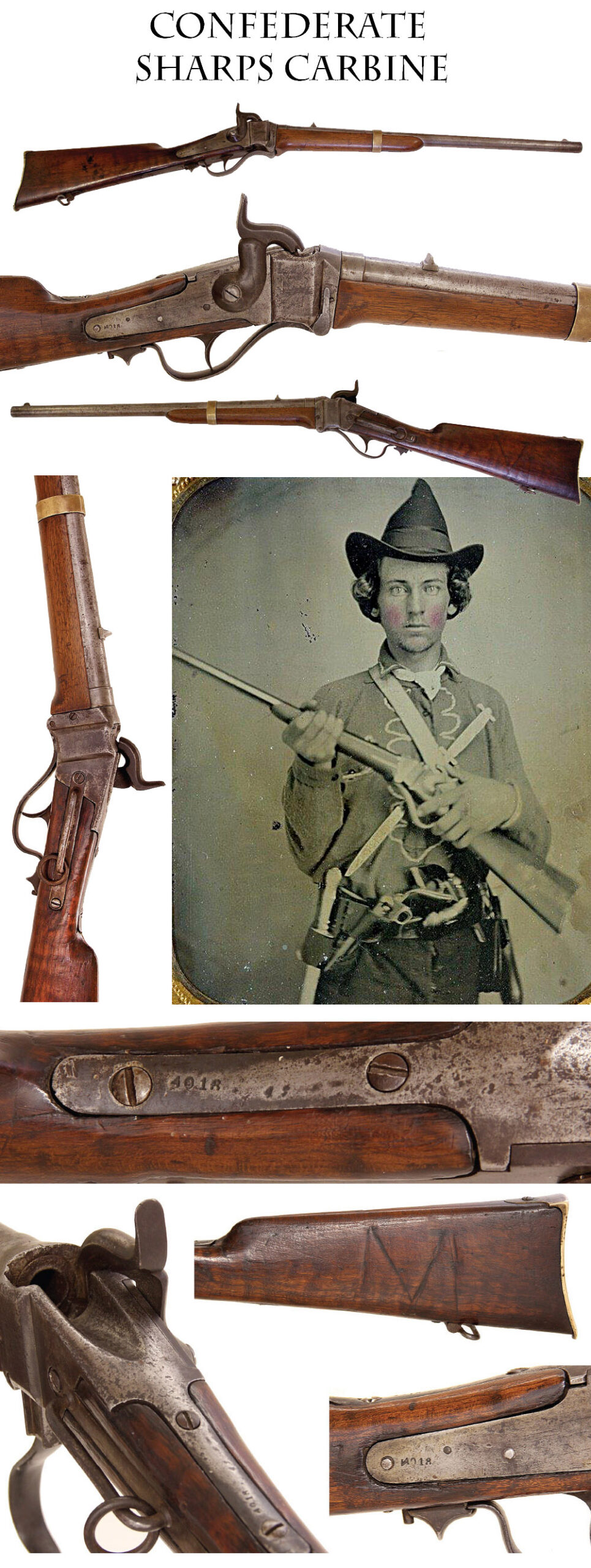
14-02-33 … Confederate Government Produced Richmond Sharps Carbine:
One of the most sought of all Confederate weapons. They are Confederate made and were issued to the horse soldiers in the Rebel Cavalry. That’s about as romantic as it gets. Samuel Robinson and John Lester were involved in a couple of arms-making enterprises in Richmond at the beginning of the war, but are best known for manufacturing copies of the Sharps carbine for the Confederacy, for which they received a contract in late 1862. They made these .52 caliber carbines, modeled on the straight breech 1859 Sharps, until March, 1863, when the operation was taken over by the Confederate Ordnance Department, who continued making the weapon until the Spring of 1864. The total number manufactured under both owners was about 5,000 carbines, roughly 3,000 in that last year, which is a pretty good rate of production. Ours is numbered 4016 on the lock and receiver tang, and shows the correct features of the CS government produced Confederate Sharps: lockplate is marked with serial number alone, without Robinson s name, and the barrel markings read Richmond, Va. only. This marking is somewhat worn, but fully legible is “…mond VA.” Typical warm brown-toned southern walnut butt stock. Forestock shows the cutout at the bottom rear that was introduced to drain loose powder from the breech mechanism and prevent the explosions that troubled early versions and careless soldiers. These carbines had the problem of loosely fit breech blocks which, upon loading, allowed powder to slip out of the breech. This loose powder sifted forward and collected under the forearm. After the trooper fired several shots there could be quite a pile of gunpowder hiding under the wood. . Then in the heat of battle the trooper’s final pull of the trigger ignited the hidden powder and the forearm blew up like an M-80 firecracker. Consequently we see Richmond Sharps with replaced original forends quite frequently. This forend stock is original but may have been replaced as the color and wear is slightly different from the butt stock. This is not at all unusual for the reasons stated above. This has the correct original brass buttplate and flat barrel band, both with warm untouched mellow tones. Sling bar and ring in place, as is the buttstock swivel. Both sights in place. Rear sight is the correct Confederate fixed v-notch block sight. Forestock shows good wood to metal fit, buttstock shows typical shrinkage gaps from use of inadequately seasoned wood. Minor dings and stains to the wood. Forestock is very good. Buttstock shows more wear but still rates good. Large soldier-carved M on the off-side. Metal generally smooth overall, silvery gray with some darker purple or pewter tones here and there and small dark spots. Minor firing corrosion at breech. Some cloudy hints of case color on the receiver. Operating lever pin and head in place. Screw slots show minor wear. Hammer shows darker tone and cup notch, likely an early replacement. Lever latch in place. Mechanically good. Confederate cavalry generally outclassed their Union counterparts until the middle of the war despite shortages of arms and equipment. The Richmond Sharps was a valiant attempt to put a modern arm in their hands. It is a key Confederate weapon and an absolute necessity for the southern cavalry collector. A very solid, representative example
… $9,500.00
Click Here to E-mail Us!
Call us @ 419-842-1863

14-02-34 … U.S. Cavalry Carbine Cartridge Box by Hoover, Calhoun & Co.:
Very clear and prominent maker s stamp on the inner flap: Hoover, Calhoun and Company of New York. They had army contracts starting in 1864 for cavalry cartridge boxes, saber belts and plates, holsters, and other cavalry accoutrements. This is a good example of their work. Mid-war configuration with a rivet and semi-circular stitching holding the fastening tab. Belt and sling loops in place, also the latch tab, inner flap, implement pouch, cover and tab, even the sling buckles on the bottom of the box that were seldom used and left off in the late war contracts. A solid box, just one tiny pencil point hole near the rivet. Typical minor crackling and alligatoring from flexing in use. These were generic boxes that could be used for different cartridges by changing the wood block inside. The block on this one is missing, so it could be used with any number of carbines. It would look great on a cavalry saber belt or on the carbine sling where many troopers wore it for convenience, or next to that carbine. I also know a number of you specialize in collecting cartridge boxes by maker and type
… $275.00 SOLD
Click Here to E-mail Us!
Call us @ 419-842-1863
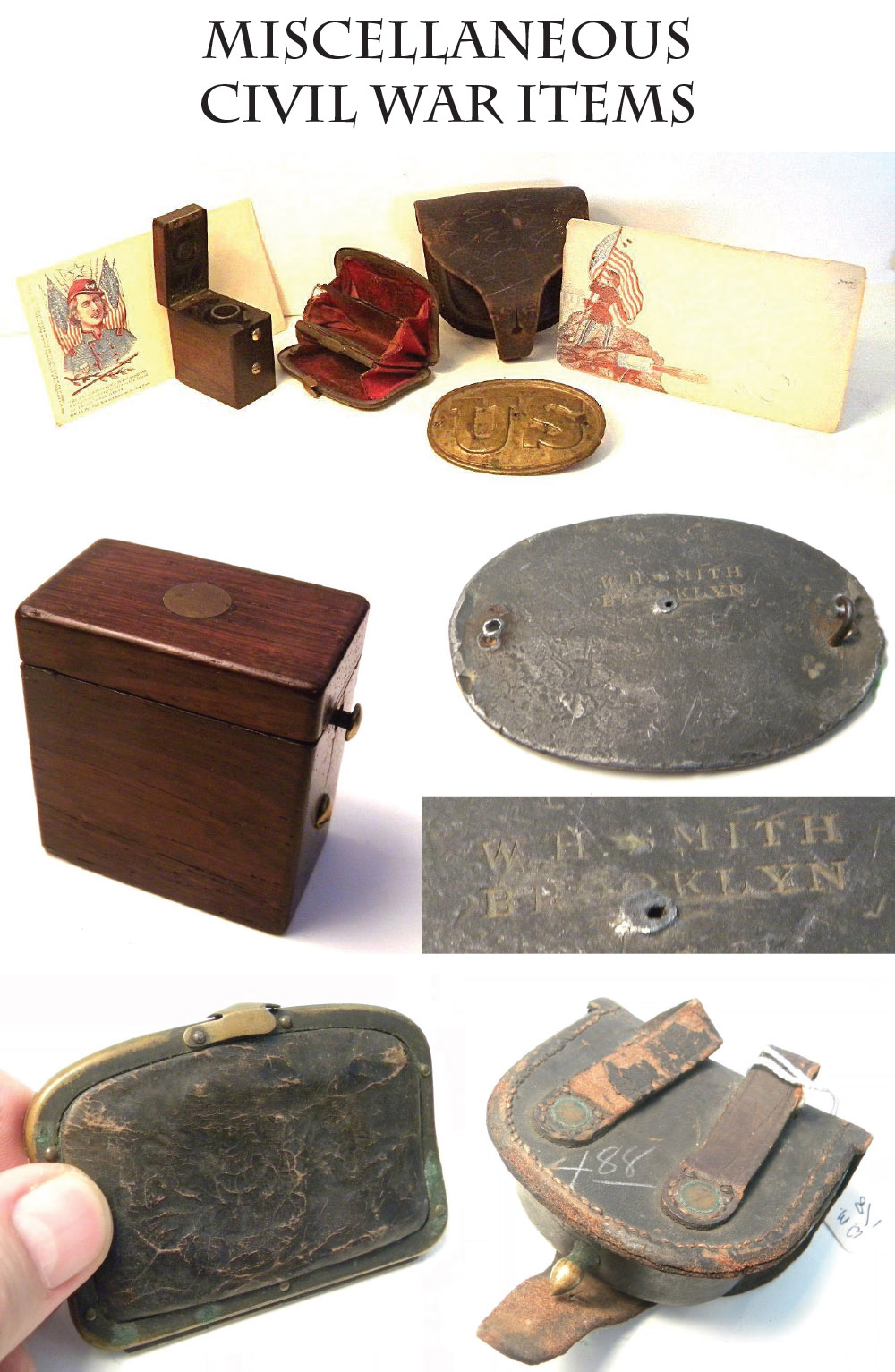
14-02-35 … Pair of Patriotic Envelopes –
unused and very visual as shown, One is “Remember Ellsworth” showing Elmer with a flag. The other is full color cover with officer, flag, firing cannon, and faint US capitol in the background clouded in gunsmoke. Much better than most. For the pair
… $35.00
14-02-36 … Cap Box With Old Timey Price:
Fine regulation cap box. Note the price of $4.88 in pencil on the leather. Likely from Bannerman’s or H.K. White around 1965
… $195.00
14-02-37 … W.H. Smith Signed Cartridge Box Plate:
A solid non-dug relic with a couple holes punched in it, and one missing attaching loop. Nicely marked with maker’s mark on the back. Bargain priced
… $100.00
14-02-38 … Superior Travelling Inkwell And Quill Holder:
Truly wonderful and high quality. The rosewood box has a spring loaded, button release catch to open the lid. When open we see the glass inkwell and two additional receptacles which contain pre-cut quill pen tips. The condition is about perfect. As to period … I believe this pre dates the Civil War by quite some time … perhaps as far back as 1812 or earlier. In any event … early – high quality – and super cool
… $275.00 SOLD
14-02-39 … change purse
Dead-on Civil War Coin Purse: Fine pocket size, brass bound, coin purse with hinged closing latch. I have owned a few documented examples over the years and each was just like this one in construction, design, and materials. Very solid and would look great with some Civil War tokens or coins
… $125.00
Click Here to E-mail Us!
Call us @ 419-842-1863
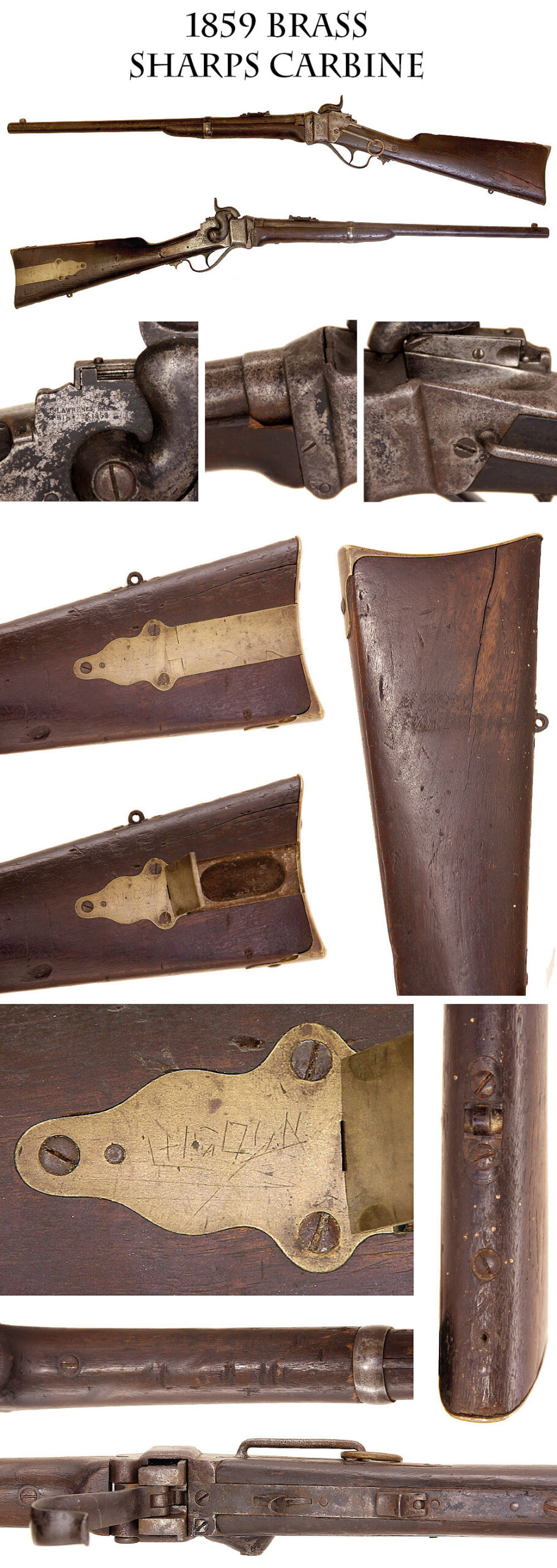
14-02-40 … Field Used Brass Mounted 1859 Sharps Carbine:
Here is an honest and well used example of a classic Civil War carbine and one with very strong Confederate associations: the brass mounted New Model 1859 Sharps. This one shows lots of wartime use, and a couple wartime alterations. It has a very southern flavor. Some collectors feel only about 3,000 of these early brass mounted versions were made, of which some 2,000 were bought by Georgia. I personally feel there were likely five or six thousand produced due to the serial numbers I have personally seen. This gun bears number 31,770. It is supposed that some of these guns were the pattern pieces for the Richmond Sharps offered above. On this one the barrel band has been replaced with an iron 1863 version and it needs a sling swivel for the butt bracket. Other than that it is completely original M1859 Brass. Warm toned brass butt plate and patch box. The upper portion of the patch box seems to have the name Higgin lightly scratched on it, at least that is my best guess. The wood has a number of dings and divots, most prominent is a crack running lengthwise above the toe of the butt, which shows an old repair by putting a screw into the underside of the stock just behind the swivel base. This was done so long ago I am certain it was during the gun’s period of service. I’d be inclined to leave it as a real example of field repair. The forestock shows some shallow notches carved crossways on the underside between the screw and band. I leave it to you to come up with a story about what they signify, but they are part of honest use of the gun. Both sights are in place and complete, as is the sling ring bar and ring. The bar and screws are original, the ring appears to be a modern replacement. (That is the only modern replacement present.) The screws show lots of crud in them, but are not buggered up. The metal is generally speckled gray on the receiver. Mechanically very good. There is a dusting of light surface rust on some edges of the receiver that would clean off in a jiffy. Also present in protected areas are remnants of black paint. Lock markings faint. Barrel markings not visible. The left side of the buttstock bears the unmistakable wear-lines of real saddle wear. This is a key weapon is US arms collecting and given the Georgia connection has strong Confederate associations as well. Here is an example that is very affordable. I would replace the barrel band with a flat brass example if I had one. But I do not
… $2,250.00 SOLD
Click Here to E-mail Us!
Call us @ 419-842-1863

14-02-41 … Rarest of the Rare! A Civil War Union Cavalry Captain s 4-button Sack Coat with a Baltimore Maker s Label Worn in New Bern:
Civil War fatigue clothing is among the rarest of Civil War antiques. These uniforms were essential field and battle dress of the soldier, simple and not expensive to begin with, subject to the most serious kinds of field wear and battle damage, and not fancy enough to be treasured by descendents. Most were worn as farm clothing after the war and discarded. Very few specimens survive today. Here is the officer s counterpart to the legendary enlisted 4-button blouse that every collector dreams of finding at the rummage sale, but only sees in the very upper end collections of long-time and experienced collectors, and this example is for a cavalry officer to boot! This is precisely the pattern of coat General Grant wore at Appomattox to accept Lee’s surrender, where he was derisively described as wearing a “private’s blouse”. Rounded rollover collar just like you want to see. Four large staff buttons down the front and three at each cuff. Typical dark blue officer quality wool cloth showing just enough fading and minor wear that you know it was worn in the field. Two exterior pockets at the waist, the right pocket showing an old repair where it tore on the left side, small repair next to lowest button and on lower left edge of coat. Very simple three-panel body constructed with no waist, and plenty of room for comfort as these were intended for undress and field wear. White sleeve linings and silk blend body lining turning green (as they all do!) Interior pocket left breast. Body lining is in front and on sides with none in the back, like an enlisted frock coat. Minor damage to interior pocket edge, short tear to lining lower right, short tear and a triangular hole in lining lower left. Several wear spots to lining. All very minor and inconsequential in a coat subject to field use and this rare. Wonderful sewn label on the sleeve lining- a square panel with printed shield surrounding, T. McCormick / Merchant Tailor / 149 Baltimore St. Also on the label panel is the period brown ink notation: 40. TH ACO or AOO Newbern. A couple of other identified McCormick Civil War uniform pieces survive: a cap from the 132nd NY and and an officer s frock from the the 4th NY. Directories indicate his brother joined the firm by March, 1864, so our coat likely predates that. The shoulder straps are very nice bullion yellow velvet cavalry captain s, showing wear absolutely commensurate with the coat. The ink notation on the label would indicate the owner was stationed at New Bern, NC. Those clues might help with an identification some day. Though I do not know if the owner’s initials were TH or AOO or??? My gut feeling is that the 40 is the size, TH likely the owners initials, then the AOO or ACO Newbern may represent the ship-to address. (Acting Ordnance Officer??? Acting Commissary Officer???) Only a few cavalry outfits were stationed at New Bern: the 3rd and 12th NY Cavalry come to mind, and they were extremely active on various scouts and expeditions, and this is just the sort of fatigue or undress coat an officer would wear on active service. Whoever the officer was, it makes sense he would travel by water from Baltimore or order his uniforms from a military outfitter in that city and have them shipped south. I was lucky enough to buy this “right” at a recent auction, and was in fact contacted by the auctioneer later asking if I would accept a thousand dollar profit on it, which I declined. This is the real deal. A dead-on-the-money Civil War officer’s 4-Button blouse. An extreme rarity. Don t hesitate if you have an interest. I have only owned three of these in forty years of buying and selling and I don t expect another any time soon
… $7,950.00 SOLD
Click Here to E-mail Us!
Call us @ 419-842-1863

14-02-42 … Smoker Brass Mounted 59 Sharps!
I can t praise this gun enough! One of my helpers just murmured oh, baby when he saw it. This is the gun you climb over tables to get to at a gun show, and if there is a little old lady in the way, well, she d understand once she saw it. Smooth metal with loads of original blue turned plum brown on the barrel, a deep amber with the blue welling up underneath, the blue particularly evident on the underside of the barrel. Warm, mellow brown wood, perfectly complemented by the undisturbed patina on the brass furniture. Tight wood to metal fit for both the iron and brass. The patch box inletting has edges sharp enough to cut your finger. Original sights fore and aft in place, as is the sling ring and butt swivel. All the correct maker and patent markings are present and very legible. Nice bore with good rifling evident and excellent mechanics. Lock plate, receiver and hammer showing strong remnants of case coloring- that smokey gray mixed with purple and brown amber that we like, and even stronger color on the block when lowered. Very minor dark spots in the wood, a couple of very minor dings or bits of channel wear at the lower rear edge of the lockplate and one side of the tang. The offside of the buttstock shows some soldier artwork: two areas of crosshatching and two compass drawn circles with interior arcs. These are old enough and shallow enough that they blend in beautifully. Running across one of the circles are the curved wear marks from the edge of the carbine sling swivel roller that cavalry collectors look for: when fastened on the mounted trooper s sling, the forestock was stabilized in the carbine socket, but the buttstock would move against the upper part of the sling swivel, leaving this unmistakable wear marks. Serial number 36587: Most collectors believe only 3,000 or so were made brass mounted, and about two-thirds of that number were bought by the State of Georgia just before the war began. I personally believe Sharps may have produced five or six thousand brass mounted 59s based on the range of serial numbers I have owned. Robinson and Lester of Richmond certainly had access to these guns when designing the Richmond version. This is another piece you should not hesitate on – it is a great looking gun, and one of the best brass 59s I have owned.
… $4,750.00 SOLD
Click Here to E-mail Us!
Call us @ 419-842-1863

14-02-43 … Pottsdam Musket:
Prussian 1809 Pattern Infantry musket percussion conversion typical of the many weapons dumped on us by helpful European governments anxious to empty their arsenals of older weapons and earn a few dollars in the process. These .72 caliber muskets take a socket bayonet that locks in place using a spring-clip mounted under the muzzle. Bands, trigger guard and butt plate are brass, which makes them showy, but added one more thing to polish for the recruit already tired from carrying their weight. This one has an even smooth gray barrel with some speckled firing corrosion at the breech. Numerous inspector, assembly, and regimental numbers on the parts, barrel, and butt plate. Lock plate markings weak- partial crown visible. A large 226 is stamped at the breech as well as F 705 on the left side of the breech. Light color European style stock with cheek rest (ash wood?). Slight crack offside at upper side plate screw. One side plate screw replaced. Sling swivels are missing but the bracket loops are intact. Ramrod is a replacement with a brass capped tip. Wood has lots of minor dings. A significant chip behind the hammer next to the breech tang has been nailed back in place with a great many nails and tacks. Gun is solid. Mechanics good. Not an elegant musket, but one that is a significant part of the story of the war.
(ryv-djj)
… $625.00
Click Here to E-mail Us!
Call us @ 419-842-1863

14-02-44 … Colt 1849 Pocket Revolver:
A very clean example of a six-inch, six shot Colt pocket with good grips and tight wood to metal fit, cleaned to bright a long time ago, but toning down again and still showing the faintest traces of case color on the frame. No cylinder scene remains. Some scattered dark specks here and there, but smooth metal overall, nipples not battered down, and mechanically perfect. Single line New York barrel address a tad rubbed along the bottom edge, but very legible, as is the Colt s Patent marking (rubbed on the bottom) and the .31 cal. marking on the frame. All matching serial number 244289, which makes it early 1864 production. Screws show some wear, but not much. Slight separation line along one side of the butt strap on the underside. The dimensions and lines of these pistols, particularly the six-inch barrel length, are very pleasing. They were a popular gun and enjoyed a long production run. They were produced in enough variations to have resulted in two worthwhile books on the model being written by Shumaker, and by Jordan and Watts. They are a collecting field in themselves. This a typical gun for Civil War officers who purchased their own weapons and wanted a revolver for firepower, but did not want to be carrying a .44 on their hip for a twenty mile march. Travelers liked them for the same reason, and in rough towns like San Fransisco in the 1850 s having a pocket pistol was necessity. Thousands were carried by the 49ers, and thousands more by CW soldiers
… $695.00 SOLD
Click Here to E-mail Us!
Call us @ 419-842-1863
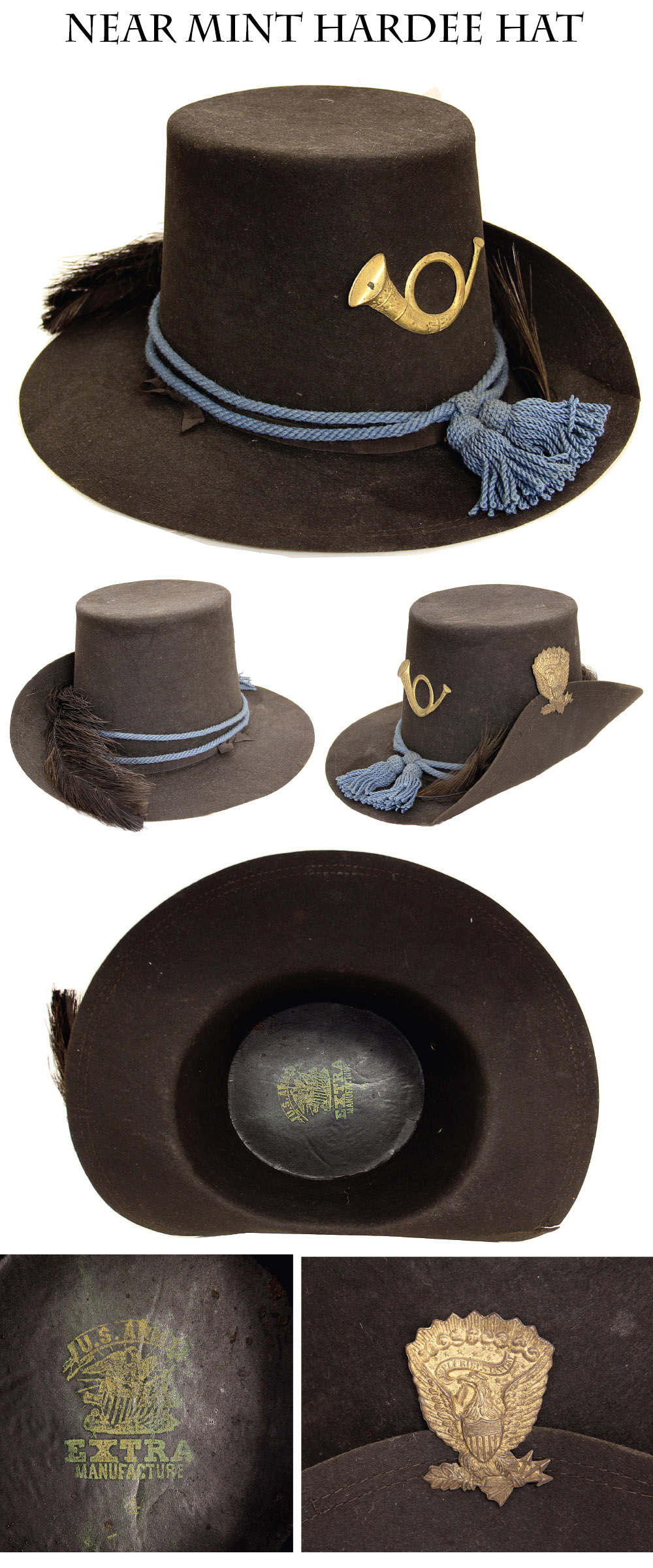
14-02-45 … Near Mint Condition Regulation Hardee or Jeff Davis Hat: the 1858 Dress Hat …
The 1855 dress hat for cavalry looked so good that the army adopted it with minor changes for all branches of service in 1858. When war broke out volunteer troops also received them and the regulations specified the hat as it appears here: branch of service hat cord and brass insignia, one side turned up and secured by the eagle side plate, and a black plume. They were not just for dress parade. Just about everyone knows the moniker black hats, applied to the Iron Brigade from their adoption of the hat for field wear, and they were not the only ones. Western troops particularly liked them with the brim let down and they saw wide service as slouch hats without the trimmings and sometimes with the top punched down. Ours is in superior condition. Not a lot of pinching in just under the top from people lifting it up to look inside, and only one small tear on the brim from handling or storage. The interior leatherette crown reinforcement is in place with legible: US Army / Eagle / Extra Manufacture with a size 4 (slightly rubbed.) Stacks of these were in army inventories after the war and surplus dealers had them in quantity well in the 1950s, but try to find a decent one today! Ours still preserves its original black color, which often oxidizes to a brown tone, still has the narrow ribbon around the base of the crown, and is trimmed out with original insignia: a nice infantry light blue hat cord, infantry hunting horn (secured on the inside with two leather wedges), a restrike enlisted Hardee hat side plate, and a black plume that is old, if not wartime. The only fault I can find with this is the missing interior sweatband, but these often loosened up and were lost once the simple line of thread holding them in place gave way. There is a very minor crack in the brim near the fold (see illustration). This looks and displays like gangbusters. Next to a cavalry musician s jacket a Hardee hat is one of my favorite Civil War pieces of cloth and this would look world class in a uniform display, infantry collection, or next to those infantry rifles and muskets. A friend of mine has his perched on top of an eagle drum I have been trying to buy for a decade. The others I have seen offered in the past few years are either way above this in price, way below in condition, or both. A great piece of headgear at a very honest price
… $4,250.00 SOLD
Click Here to E-mail Us!
Call us @ 419-842-1863
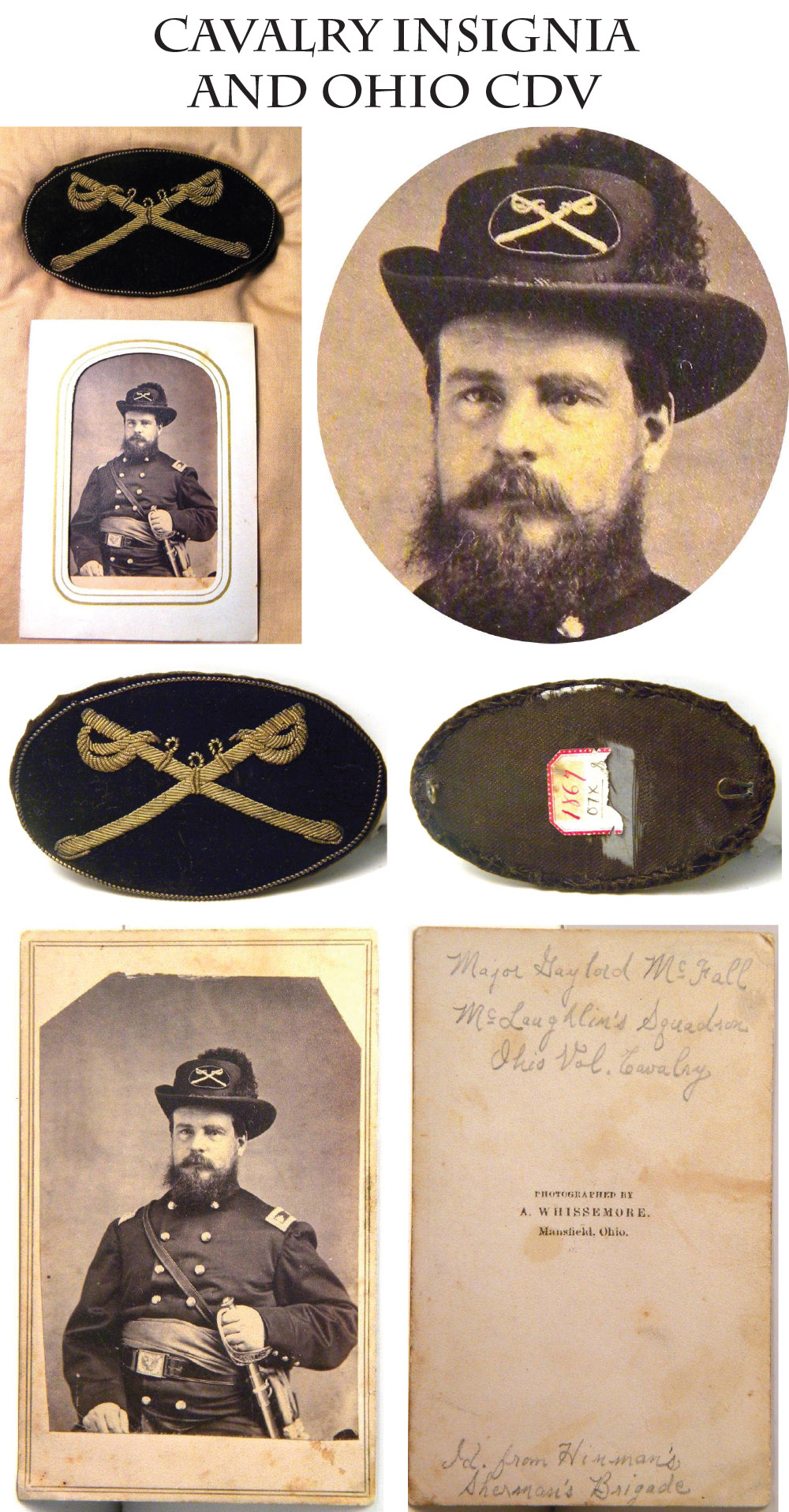
14-02-46 … Extremely Rare and Ultra High Quality Cavalry Embroidered Officer’s Hat Insignia:
CDV Ohio Officer: These two pieces are shown together because the insignia is identical to that worn by the officer in the CDV. This is a bullion embroidered pair of crossed sabers on velvet with twisted wire border. Overall excellent with tin stiffener behind the velvet, brown polished cotton back, and both attaching loops intact. Superb condition. Large size, and RARE. These cavalry insignia are IMPOSSIBLE to find at antique shows and flea markets now
… $1,250.00 SOLD
14-02-47 … CDV PHOTO OHIO CAVALRY OFFICER:
Superb from life image of Gaylord McFall. 33 years old. Enlisted on 10/28/1861 as a Captain. On 11/26/1861 he was commissioned into “A” Co. OH McLaughlin’s Cavalry Promoted Major July 19th 1862. Resigned on 1/17/1863. A super “from life” uniformed portrait of him with stunning clarity and contrast. Some inconsequential loss of albumen paper in upper corners. Here is a history of the unit. while McFall was with it … Garfield’s Campaign in Eastern Kentucky against Humphrey Marshall December 23, 1861, to January 30, 1862. Garfield’s Expedition to the Big Sandy September 23-30, 1861. Advance on Paintsville December 31, 1861, to January 8, 1862. Action at Jennies January 7, 1862. Occupation of Paintsville January 8. Abbott’s Hill January 9. Middle Creek January 10. Prestonburg January 11. Expedition to the Little Sandy January 24-30. Expedition to Pound Gap, Cumberland Mountains, March 14-17. Action at Pound Gap March 16. Duty at Piketown till June. Moved to Prestonburg, thence to Louisa, Ky., July 15. Duty at Louisa till December. In Oct., 1861, the governor of Ohio requested the war department permission for Maj. McLaughlin, of Mansfield, to raise a force of cavalry. Said permission was granted and a special order was issued to Wiliam McLaughlin to raise an independent command, to be named McLaughlin Squadron. This squadron was organized and mustered in at Mansfield, Ohio in Nov. and Dec., 1861. A SUPERB CIVIL WAR PORTRAIT
… $275.00 SOLD
Click Here to E-mail Us!
Call us @ 419-842-1863
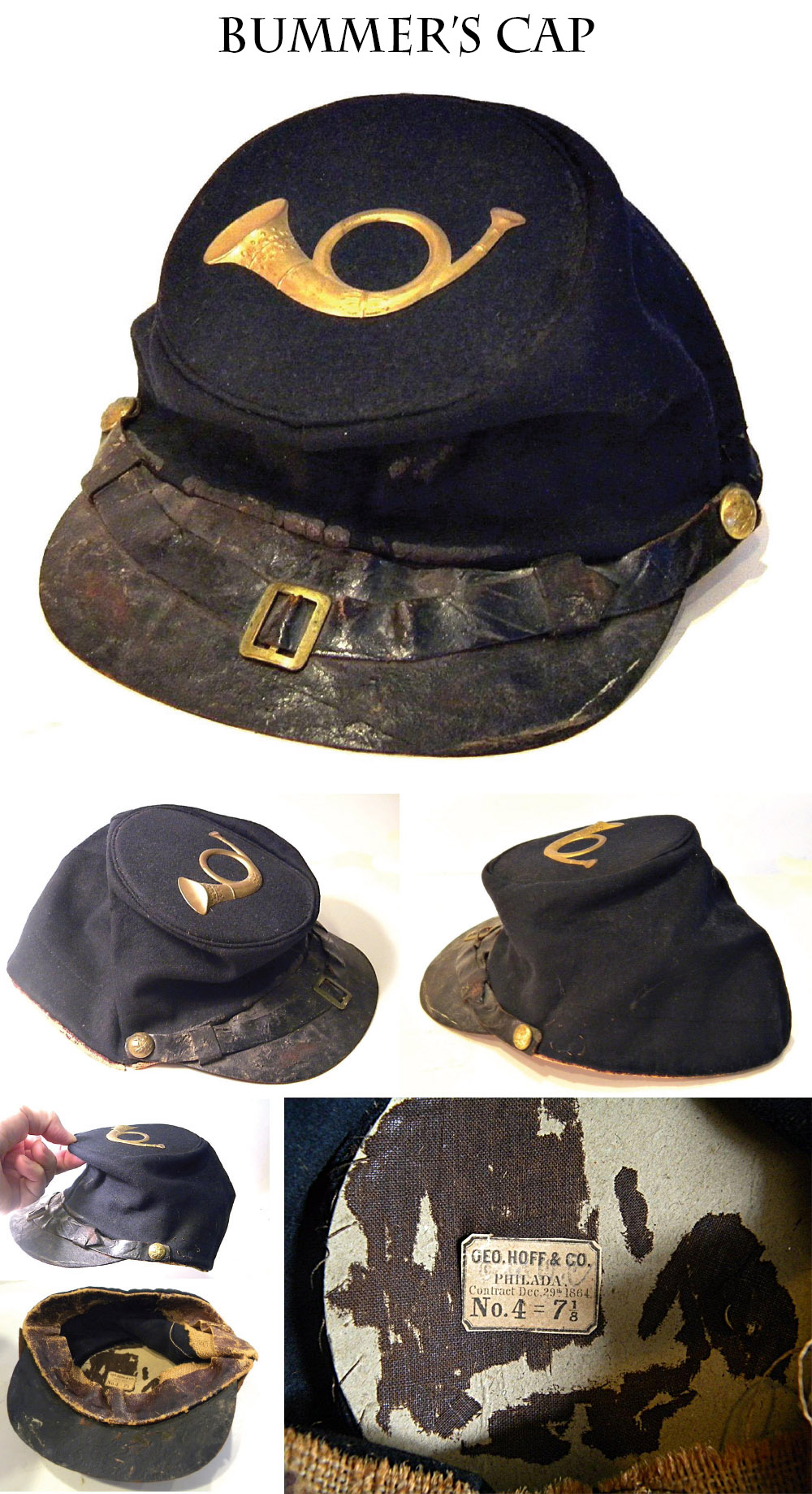
14-02-48 … Regulation Issue 1858 Pattern Fatigue or Bummer Cap:
The iconic piece of Civil War headgear. Most soldiers in every branch of service were issued several of these during the course of their service. This one is the Type-1 in collector terminology, with a slightly downturned visor and somewhat smaller crown than the Type-2, and is generally regarded as the earlier version. Some refer to it as an enlisted McDowell pattern. The exterior is in super condition, complete with chinstrap and buckle, both side buttons in place. No significant moth damage. The visor is firmly attached. The lower edge of the front and one spot in the middle show some staining from the tarred visor when the cap laid flat for about 150 years, and likewise the chinstrap sets pretty flat across the visor. These are nice signs of genuine age. The sweatband is complete and in place inside, some wear along the lower edge fold, but no missing areas. The loose-weave buckram is still behind it, but the interior polished cotton lining is mostly gone. The previous collector managed to salvage some of it and pasted it down to the cardboard crown piece and thankfully saved the George Hoff and Company paper label. The Hoff labels are among the most detailed, giving contract date, size, etc.., An original infantry hunting horn insignia is affixed to the crown. These caps are the quintessential display piece in any Civil War collection and as many as I have handled over the years they still produce a bit of a thrill when I find one to offer for sale
… $2,595.00 SOLD
Click Here to E-mail Us!
Call us @ 419-842-1863
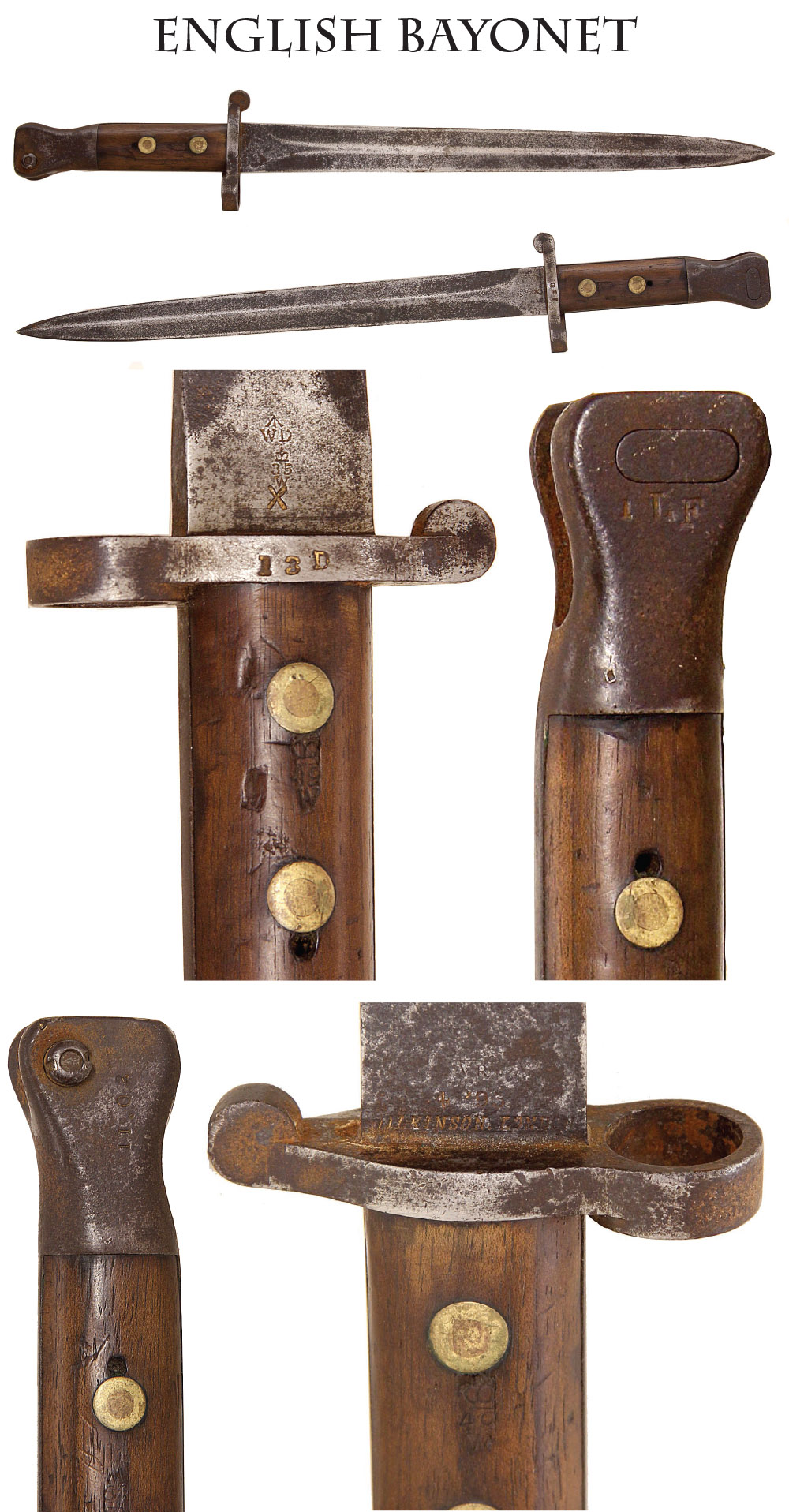
14-02-49 … Britsh Model 1888 Type II Lee-Metford Bayonet:
From Queen Victoria s little wars. Double edged, wood-gripped bayonet for the Lee-Metford rifle. The Type II used two brass rivets rather than three to secure the wood grips and has an oil cleaning hole near the second rivet. Wilkinson London marked at the ricasso on one side along with a VR and date of 1895. Broad arrow, WD inspector marks, etc. on the other. 1 LF stamped on the pommel, likely a unit mark, and 13 D on the guard, likely a rack number for the 13th private in Company D. Blade shows light pitting overall, darker gray mixed with light. Some corrosion on the pommel, but not bad, and a bit over the Wilkinson mark, though still legible. Wood grips good, inspector s stamp on wood grips still very clear. A decent example of a British bayonet from the days of colonial expansion
… $50.00 SOLD
Click Here to E-mail Us!
Call us @ 419-842-1863
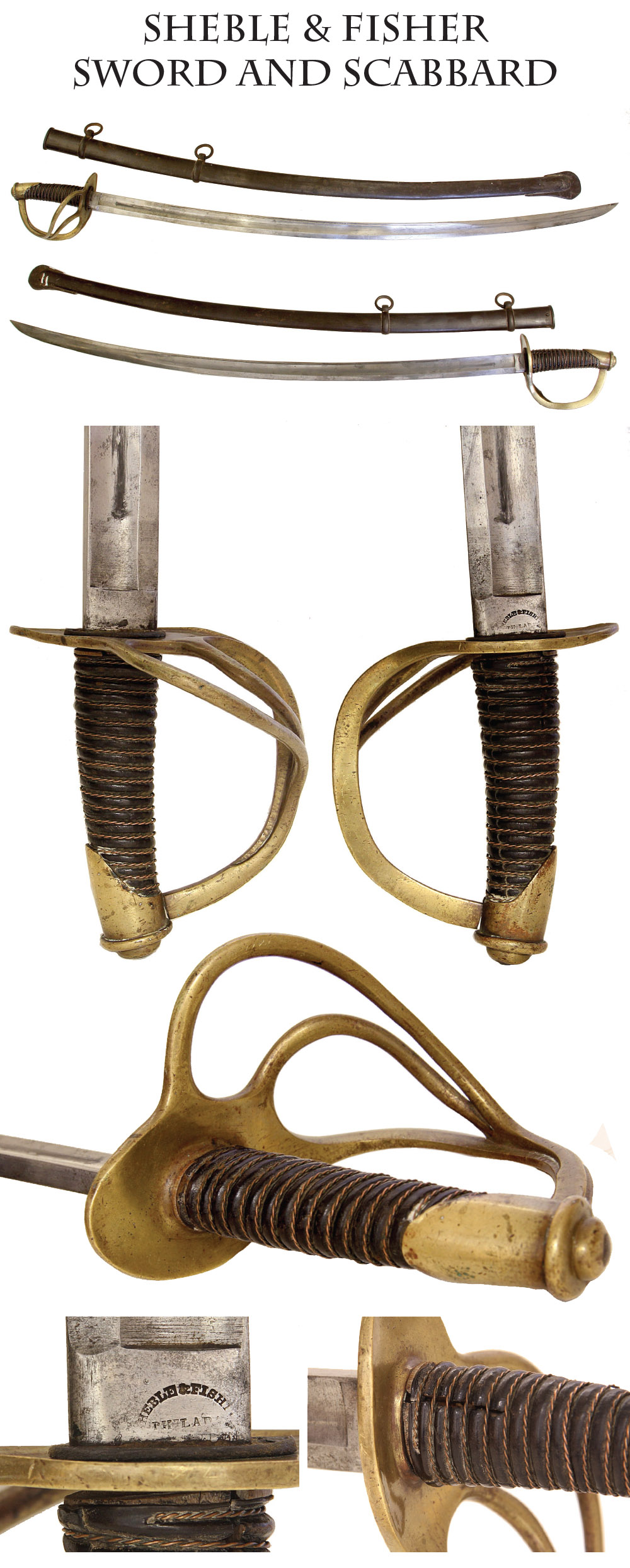
14-02-50 … Freshly Found Sheble and Fisher 1840 Pattern Heavy Cavalry Saber in Mexican War S&K Scabbard:
This came out of a family right here in Toledo last month and it was carried just this way 150+ years ago. Sheble and Fisher products are rated scarce in John Thillmann s book on cavalry and artillery sabers. They have always also been a bit of a puzzle because of the absence of contract records other than for some of their NCO swords and a few of the artillery sabers, but the number of examples out there of the 1840 pattern artillery and cavalry sabers indicate they had contracts or expected them. Roby is an example of a maker whose products show government acceptance but whose contracts are missing, and Hammond is a maker like Sheble and Fisher whose products show up enough to indicate contract but are not so marked. Similarly, even the Sheble and Fisher artillery sabers that were produced on contract are not so marked. The general feeling among collectors is that more archive work needs to be done. Ours is their characteristic heavy cavalry saber: marked on one side of the ricasso Sheble & Fisher in an arc over Philada. and is complete with scabbard. Of interest is the fact that the scabbard is a Mexican War contract piece marked S&K over ?M. on the drag (Schnitzler & Kirschbaum). This scabbard has been with this saber as long as the local family owned it. It is a perfect fit and exactly the same condition as the saber. Unfortunately the descendants had no idea of the identity of the ancestor who carried it. The blade is extremely nice with no nicks, bright throughout with just slight gray drag lines near the ricasso, and still shows the manufacturer s cross polishing near the guard. Grip leather and full twisted wire is in place, as is the leather washer below the guard. Very slight shrinkage of the leather toward the guard. The 1840 pattern saber was the characteristic saber of the dragoons before the war and was a robust replacement of the 1833 pattern. Around 1857 the new light cavalry version, known by collectors as the 1860 was introduced, but the 1840, with its heavier square backed blade was still favored by some and many of the privately produced and imported blades followed that pattern. This is a very nice example produced by a hard-to-find maker, in a VERY rare scabbard
… $750.00 SOLD
Click Here to E-mail Us!
Call us @ 419-842-1863
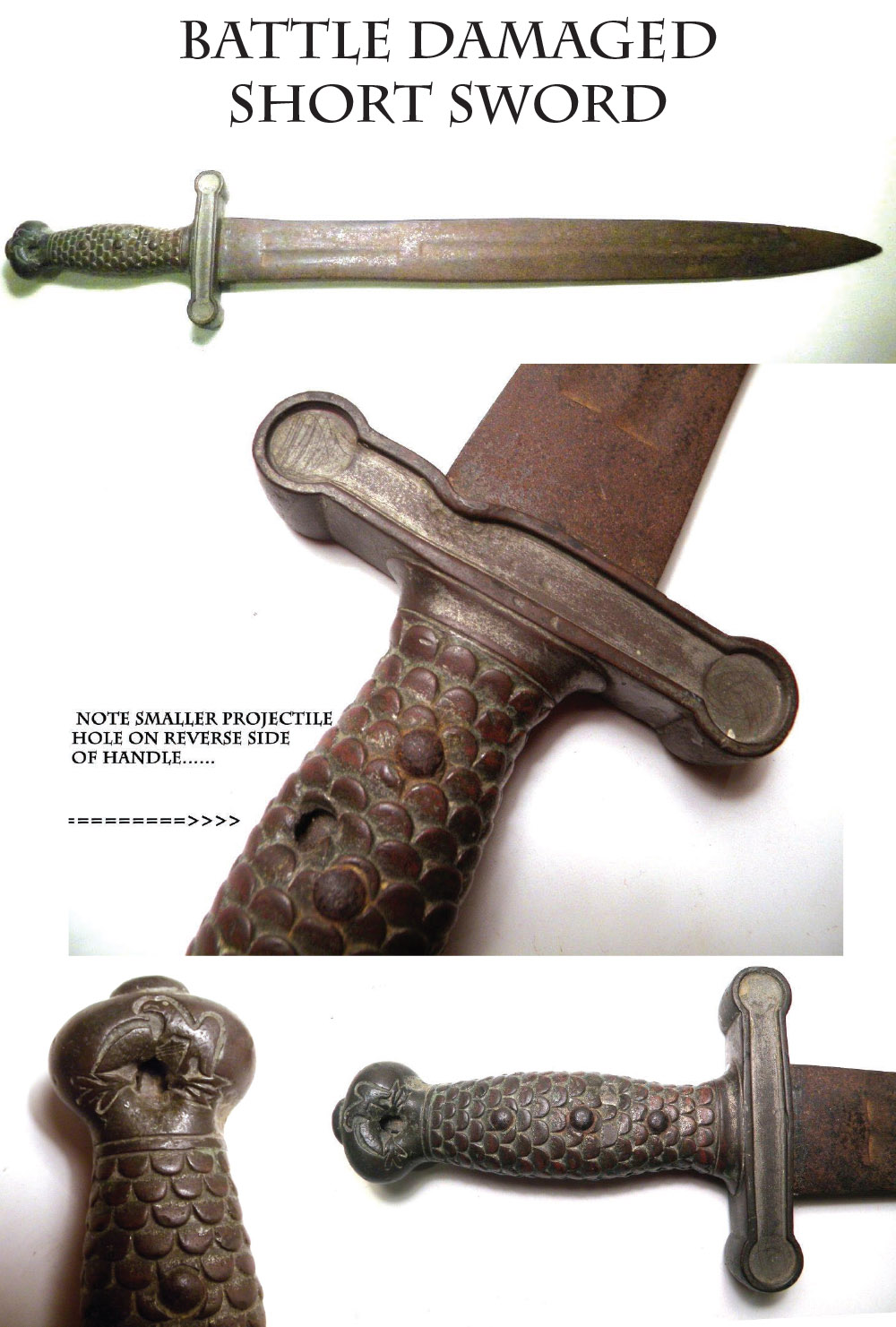
14-02-51 … Battle Damaged Artillery Short Sword:
One of my favorite finds of late. Wonderful “as found” relic with rusty crusty blade, heavily patinated brass handle and guard … and best of all three severe “hits” from projectiles. One side has a penetration point in the face of the pommel. The other side has one in the center of the handle and a severe dent in the cross guard. I wish I knew which battlefield this was from. I’ll let you pretend it is from your favorite battle
… $1,250.00 SOLD
Click Here to E-mail Us!
Call us @ 419-842-1863
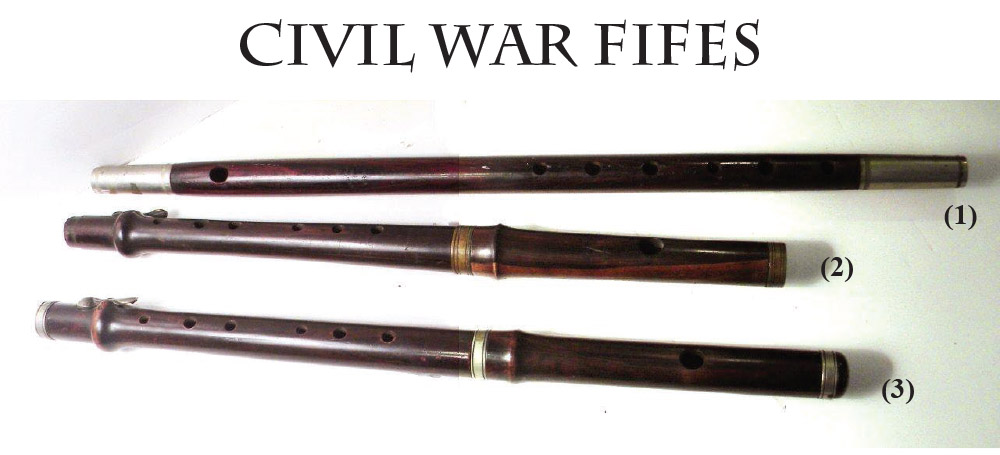
14-02-52 … Fife (1) Standard CW Rosewood Fife:
Overall excellent condition. 18 inches overall length. The German silver ferrules (end caps) are long, indicating early production. Signed Geo. Cloos / Crosby indicating Crosby model fife produced by George Cloos. The George Cloos Company produced piccolos,flutes, clarinets, and fifes, in a shop in Brooklyn, NY from 1862 until 1946. This specimen has alternating size finger holes which indicates early production. Fifes with same size finger holes are much later. This is the most commonly encountered form of Civil War fife
… $139.00 SOLD
14-02-53 … Fife (2) English B-flat One Key Flute or Fife:
14.75 inches overall. Two piece construction. Marked near the mouthpiece “Douglass Improved London B,b” My research here shows Douglass family as instrument makers 1860 to 1920 in Dublin and London. Has two brass ferrules and lacks a third near the pitch key
… $150.00 SOLD
14-02-54 … Fife (3) English Rosewood B,b One Key Flute / Fife;
16 inches overall. Two piece construction. Faintly marked on finger hole section and again on the upper section Starck London Improved B,b . According to author Jeannie Campbell, regarding the Starcks of London … R.H. Starck, Silversmith, first appeared in London trade directories in 1816. John Starck appeared as a Musical Instrument Maker in 1844, Edward Starck as Musical Instrument Maker in 1865, Starck Brothers as flute, flageolet, and clarionet makers 1874, Walter Starck as flutemaker in 1889, John Starck, music seller 1900, and J. Starck and Son, Musical Instrument Makers 1900. This instrument has the feel and flavor of third quarter / nineteenth century. Has three silver or German silver ferrules. High quality instrument
… $175.00 SOLD
Click Here to E-mail Us!
Call us @ 419-842-1863

14-02-55 … Fife (4) Fine Ebony (or extra dark rosewood?) CW Fife with 3 Ferrules:
17 inches overall. Unsigned. Excellent condition. The center silver band adds greatly to the eye appeal
… $145.00 SOLD
14-02-56 … Fife (5) VERY RARE Civil War American Made 1863 Boxwood Fife / New York Maker Signed:
A VERY RARE mid war specimen. Union Army regulations called for fifes to be produced in Maple. But as a point of fact we rarely see Maple fifes. Most we see are rosewood. This one is boxwood which resembles maple, but is sturdier and is found on better woodwind instruments. Here is a dandy for your consideration. This one is 15 inches overall, with two richly patinated brass end ferrules, and nicely signed by famed Civil War maker Firth Son & Co. / New York . Here is a history of Firth – John Firth (1815-1820) – Probably manufactured instruments only. Firth & Hall (1821-1832) – Imprint was still in use in the 1840s. Firth, Hall & Pond (1833-1847); Firth, Pond & Co. (1847-1863). Firth, Son & Co. (1863-1867). Finding blonde wood fifes is darn difficult. Finding one by a respected and documented American maker is downright rare. I believe it has been fifteen years or more since I last owned one of these. A superior example of a dead-on American Civil War fife
… $275.00
SOLD
14-02-57 … Fife (6) Gutta Percha (Hard Rubber) Fife !!! :
I bought this in a large collection many months ago and did not realize until this moment that it is made of gutta percha. 17 inches in length. Long silver (german silver) end ferrules. Body made of darkest brown gutta percha (hard rubber). Finger holes alternate large and small. Also present a Cloos signed cheater mouthpiece … not possible to know when this was added. In the nearly 45 years that I have collected Civil War items… this is the first gutta percha fife I recall finding
… $350.00
Click Here to E-mail Us!
Call us @ 419-842-1863

14-02-58 … Fife (7) Highest Quality 2 Section Ebony and Ivory Keyed Small Flute or Fife:
12 inches overall. Keyed. Unsigned. Mouthpiece section is ivory with crack as shown. Balance is ebony. Very high quality mid 19th century.
… $195.00 SOLD
14-02-59 … Fife (8) 22nd and 29th Michigan Soldier s Fife:
I was born and raised in Michigan and frequently hold Michigan items for a while before selling. I bought this fife October 7th 2003 and have kept it eleven years. Now I am cleaning house and thinning down my holdings. The descendant related that this fife was carried by George Casamer 22nd and 29th Michigan. I bought it from direct descendant also named George Casamer. Our soldier served 1862 through 1865. The National Park Service shows him as a Private in the 22nd then Musician 3rd Class in the 29th. For some reason civilwarData lacks the records. Fife is rosewood, 15.5 inches long, one key. Overall excellent
… $325.00
SOLD
14-02-60 … Ohio Drummer Boy’s Drum Sticks:
I obtained these sticks along with two superb cdvs of an Ohio drummer boy with his drum. I cannot locate the CDVs at this writing to relate the identification, but will find them shortly. Call for details. These are the real-deal. True Civil War sticks. I do not know why the ends have triangular openings. Can you shed light?
… $325.00 SOLD
Click Here to E-mail Us!
Call us @ 419-842-1863
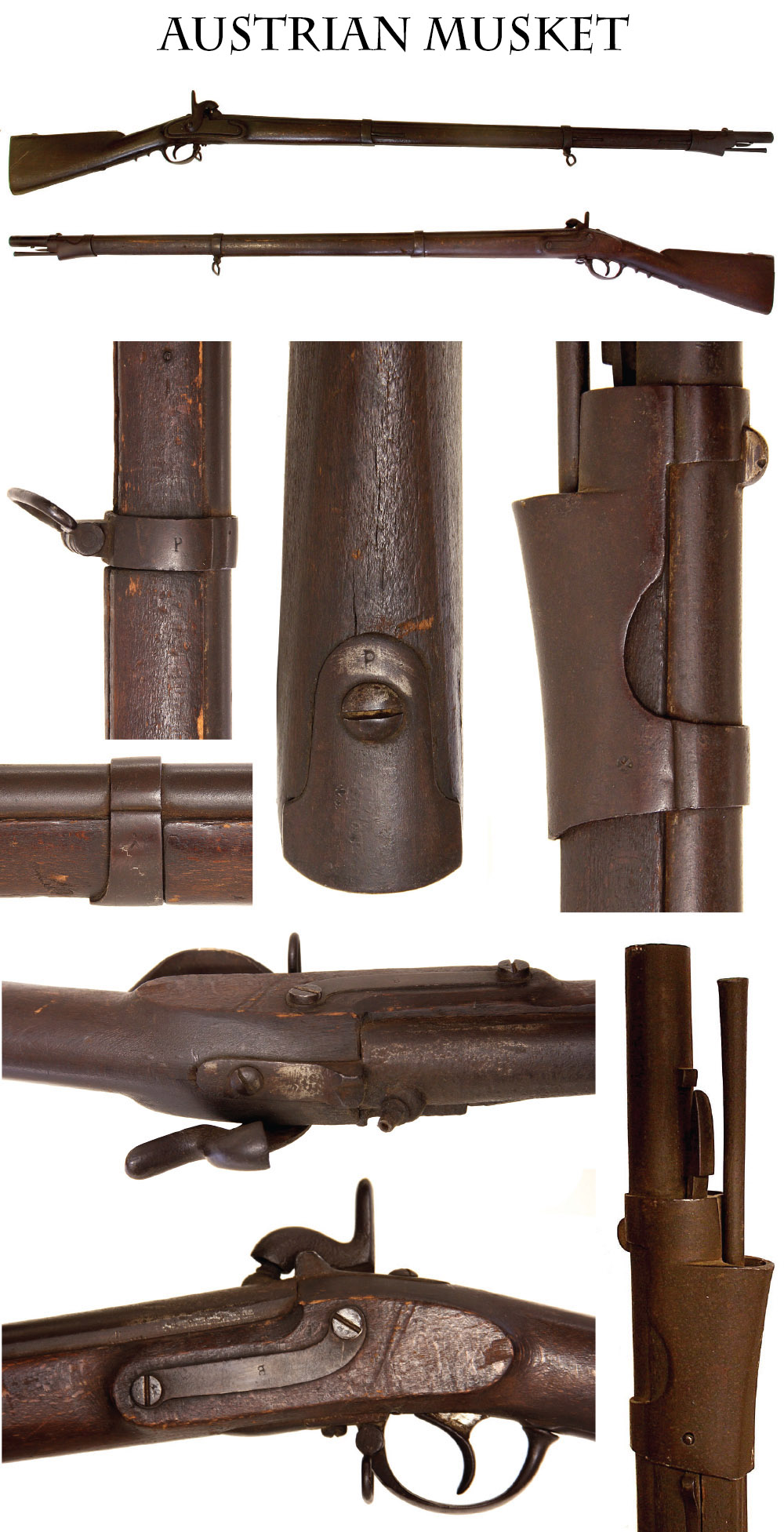
14-02-61 … Imported Austrian Augustin Musket, Model 1842:
A solid example of the large bore, about .70 Caliber, muskets purchased abroad by American agents desperate to acquire arms that we could not yet produce in sufficient quantities to arm the volunteers. These Austrian muskets were originally tube-lock and then converted to percussion locks by forging a cone seat on top of the barrel around 1861. Our agents were happy to get them, perhaps almost as happy as the Austrians to sell them. Ours is iron mounted and smooth bore, taking a rectangular socket bayonet retained by a spring beneath the muzzle. Foresight is integral with the front band, rear sight is a simple v-notched block on the tang. All bands, swivels, retaining spring in place. Ramrod is period and for an import musket but does not have the Austrian torsion peg hole near the head and is from another musket, not that it mattered to the soldier who grabbed it from his neighbor on the firing line to ram down the next charge. No lock or barrel markings visible, but various small assembly letters, etc. Smooth brown metal overall, a little crustiness near the breach from firing, but generally much better than average metal and wood for these guns. Some expected minor bumps and dimples, but only minor edge wear and good overall color. There is a two line scratch in the wood near the side plate and a small chip out at the rear of the raised area next to it, but the edges show very little handling wear. Mechanically perfect. A solid gun and a very good example of the early war infantry arm. If you like pumpkin slingers, here is a dandy.
(cc-E)
… $750.00 SOLD
Click Here to E-mail Us!
Call us @ 419-842-1863
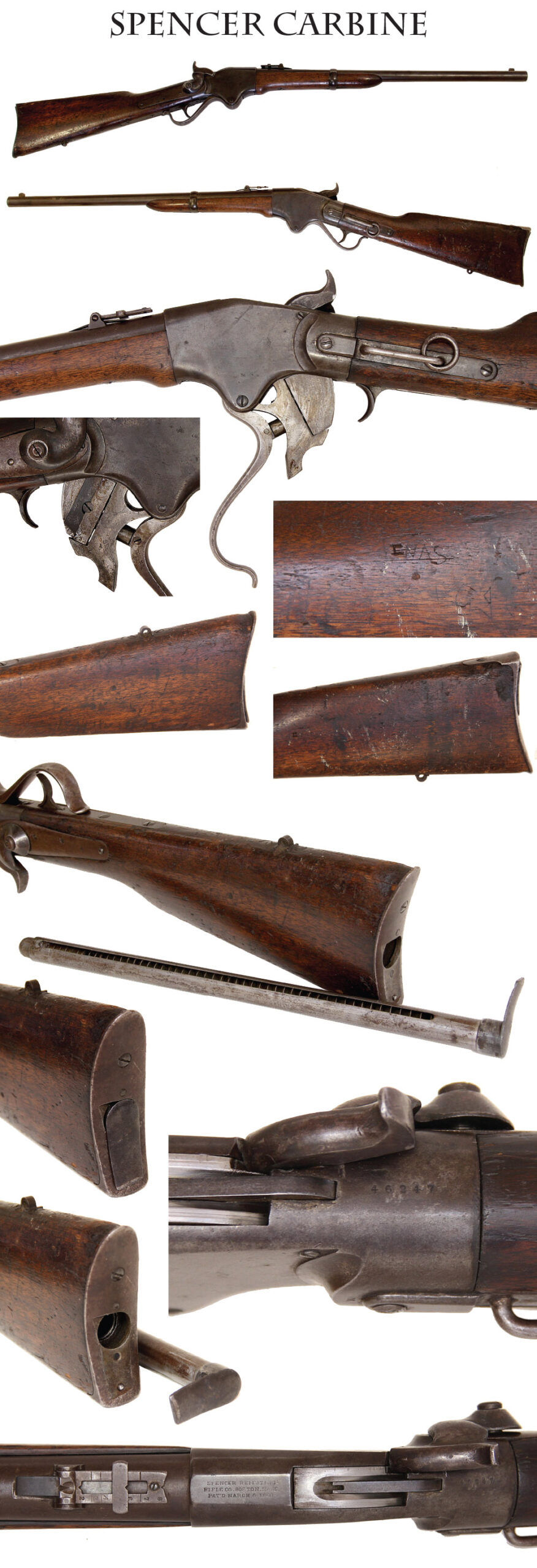
14-02-62 … 1860 Spencer Carbine w/ 2 Cartouches:
This is the wartime Spencer made by the company in Boston, number 46,247. The story of Christopher Spencer and his magazine fed, breech loading arms is legendary. The famed Spencers placed seven consecutive shots at the ready for the cavalry trooper without requiring reloading and proved a big surprise for the opposing force. They were made from 1863-65 and serial numbered from about 11,000 to 61,000. This one is in very good condition with nice wood and metal, sights fore and aft with spring, ladder and sight bar, and barrel band in place as is the sling ring and bar. Very clear Spencer Repeating Rifle Co. Boston, Mass. Pat d March 6, 1860 markings on top of receiver. Good rifled bore. Mechanically excellent. Magazine tube in place and easily drawn. Tight wood to metal fit. A few dings to the buttstock from wartime use, some some light white paint rubs on the inside and a couple sets of small lightly scratched initials, one of which has a deeper carved C and might be the beginning of Chas the abbreviation for Charles. Minor wear at toe and one side of heel of the butt at the buttplate, typical for a gun standing in the corner for a seven or eight decades. Both cartouches are clearly visible on the left side. Smooth metal overall with rich deep rust brown age patina. Some speckled brown on the lockplate. The very tip of the hammer was slightly re-shaped during its’ period of service. Some minor pitting on the receiver. Lacks the swivel in the butt. The base is present, just needs the swivel. Hammer screw is replaced. A very pleasing Spencer, key in a cavalry display or carbine collection
… $2,200.00 SOLD
Click Here to E-mail Us!
Call us @ 419-842-1863
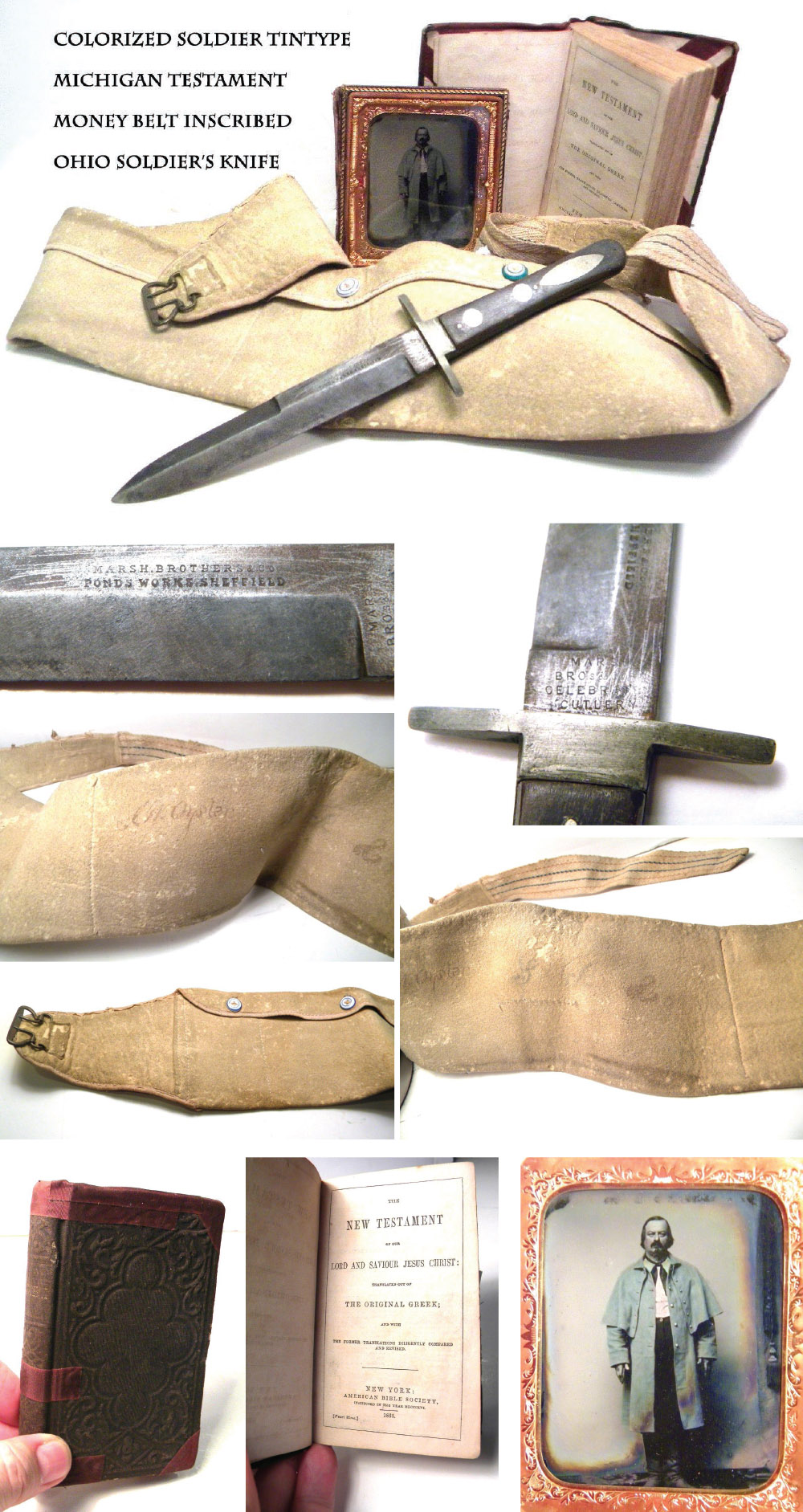
14-02-63 … Extra Fine Union Soldier Tintype Showing Greatcoat:
Superb, near mint sixth plate tintype in half case. Union soldier wears his caped infantry greatcoat. The photographer was a true artist as he delicately washed the coat in sky blue so that the image looks like an actual color photo. Of no consequence is my observation the our yank bears a resemblance to actor Dennis Franz who played Detective Andy Sipowicz on the old cop show from the 80s Striking colorized image
… $250.00 SOLD
14-02-64 … 1864 Pocket Testament:
Classic, standard, pocket testament as carried by most Yankee soldiers. Hard bound in cloth over paste board. Pub by The American Bible Society in 1864. Very tight and solid with some cloth tape repairs to the edges of the boards. This turned up in Michigan … Owners name “Hiram Morgan” written on fly leaf. There are eleven men so named in the Union Army, none from Michigan. Nice personal item
… $75.00
SOLD
14-02-65 … 1840s to 1860s Era Doeskin Money Belt:
This is the type of money belt carried in the gold fields of California, worn by gamblers on the Mississippi River Boats, and by very few soldiers because they seldom had much money. Excellent condition and inscribed with owner’s name J.(?) W. Oysler or Oyster. Also inscribed with initials. Constructed with four flapped pockets secured by six wonderful blue and white porcelain buttons. Great piece of Americana
… $250.00 SOLD
14-02-66 … Belt Dagger Carried By David Fritz 37th Ohio:
This was just “picked” out of a southern Michigan estate by a local “picker” that I have dealt with for decades. History is oral, but I am confident it is true and honest. Just over 9 inches in length. Solid showing honest wear and use. The grey steel blade is marked twice… “Marsh Brothers & Co. Ponds Works Sheffield” and “Marsh Brothers Celebrated Cutlery.” David Fritz served in the 37th Ohio Regiment from September 1861 through September 1864. Here is a history of the 37th Ohio. from The Union Army… This regiment was organized at Cleveland, from Sept. 9, 1861, to March 1, 1862, to serve for three years. It moved to a point on the Kanawha river in West Virginia and spent the winter in that region. In the spring of 1862 it was engaged in some severe and unsuccessful fighting at and near Princeton, in which it lost 1 officer and 13 men killed, 2 officers and 46 men wounded, and 14 men missing. In an expedition to Wyoming Court House in August, a detachment of the regiment fell into an ambuscade and was surrounded by the enemy, but cut its way out of the difficulty with the loss of 2 killed, and 1 officer and 7 men taken prisoners. At Fayetteville and Cotton hill the regiment was also engaged, and in the retreat that followed it lost 2 men killed, 3 wounded, and 62 missing, of which latter a large portion were teamsters and train-guard. In the early part of 1863 the regiment was transferred to the West, and in the bloody but unsuccessful assaults on the enemy’s works at Vicksburg and the subsequent siege of that place, it lost 19 killed and 75 wounded. After the surrender of Vicksburg the 37th participated in the expedition against Jackson and on the capture of that city the regiment performed provost-guard duty for some days. At Missionary ridge it participated in an as- sault on the enemy’s fortified position, in which it lost 5 men killed and 36 wounded, 5 of the latter being officers. In March, 1864, three-fourths of the men re-enlisted for another term of three years and at the expiration of their furlough re- joined the army and participated in the advance on Resaca, in which the regiment lost 3 killed, 2 of whom were officers, and 10 men wounded. In the engagement at Dallas and that at New Hope Church it lost 4 men wounded. On the retreat of the en- emy, the 37th pursued toward Acworth, went into line of battle in front of Kennesaw mountain, and participated in the memora- ble and disastrous assaults made by the Federal forces upon that stronghold, in which the enemy was compelled to fall back and abandon the position. The regiment lost 4 men killed and 19 wounded. On July 22, it held a position on the right of its division, in breastworks abandoned by the enemy on the previous night, and being flanked it lost 4 men killed, 10 wounded, and 38 were taken prisoners. In the fierce encounter at Ezra Church, where the Confederates were severely punished, the regiment was deployed as skirmishers on the extreme right, and completely frustrated an attempt of the enemy to turn the Federal right, losing 1 man killed and 5 wounded. The regiment participated in the march to the sea and up through the Caroli- nas, then after the grand review at Washington was sent to Arkansas and was mustered out on Aug. 7, 1865. A real, identified Civil War small Bowie or Dagger
… $395.00 SOLD
Click Here to E-mail Us!
Call us @ 419-842-1863
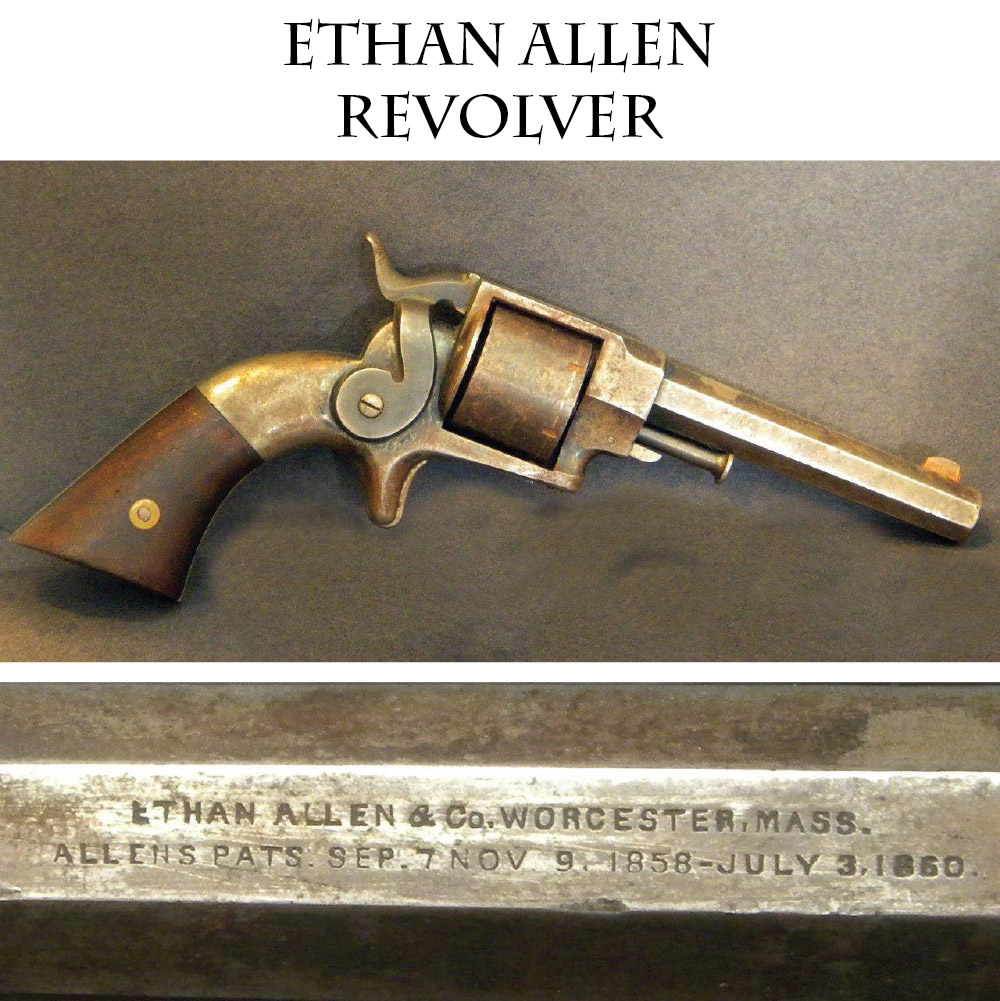
14-02-67 … Ethan Allen 32 Sidehammer Rimfire Revolver –
A classic early 1860s sidearm as carried by thousands of Civil War soldiers. 32 caliber 6 shot with 4 inch barrel. The octagonal barrel is stamped on the top flat with the full Ethan Allen legend. See illus. This gun has a light smoky grey age patina, and fine walnut grips. All matching numbers of #376. All original and complete and mechanically fine. A good solid Civil War revolver …
xcej130316
… $550.00 SOLD
Click Here to E-mail Us!
Call us @ 419-842-1863
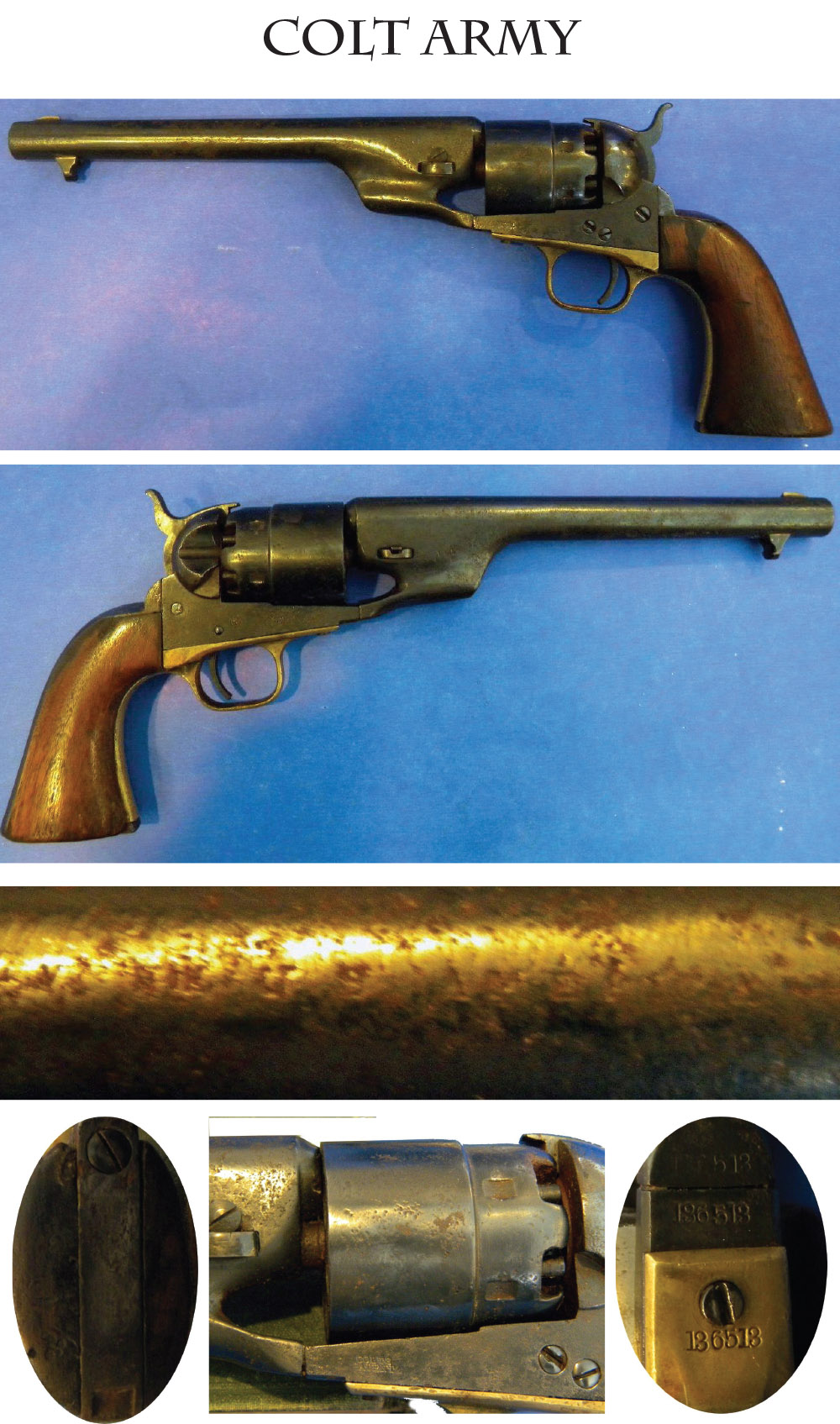
14-02-68 … Colt Army Project Gun:
Standard Civil War 44 caliber Colt that needs a little work. All parts are original. Cocks and indexes fine. Wedge is original. It lacks only the loading lever. Serial numbers match. Butt strap number removed. Cylinder number worn away. Barrel legend very worn. Grips worn but not abused. All steel parts were reblued half a century ago or longer. Sub inspectors’ marks still legible on most parts. If you want to put a little work into this old Colt you can make some money for your effort. I considered keeping it for parts as the value there is likely higher than my price for the entire gun.
(cc-E)
… $695.00 SOLD
Click Here to E-mail Us!
Call us @ 419-842-1863
Layaways are Welcome
Need to split your order into multiple payments? No problem! A simple 20% earnest money deposit will hold your item for you.-acf
You can then pay it off in easy installments that fit your budget.
Read Terms Here
Items to Sell? Contact Us
I am always interested in buying ANYTHING from the American Civil War… Guns, Swords, Civil War Muskets, Knives, Uniforms, Flags, Medals, Badges, Diaries, Letters, Autographs, Buttons, photographs, tintypes, daguerreotypes, Insignia, Camp Items, Battlefield Relics, canteens, Drums, Etc… Call 419-842-1863 and ask for Dave Taylor.

